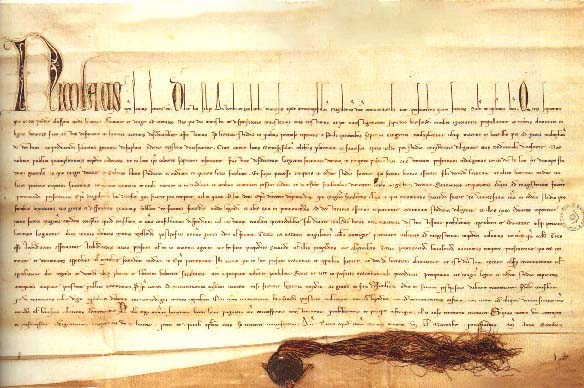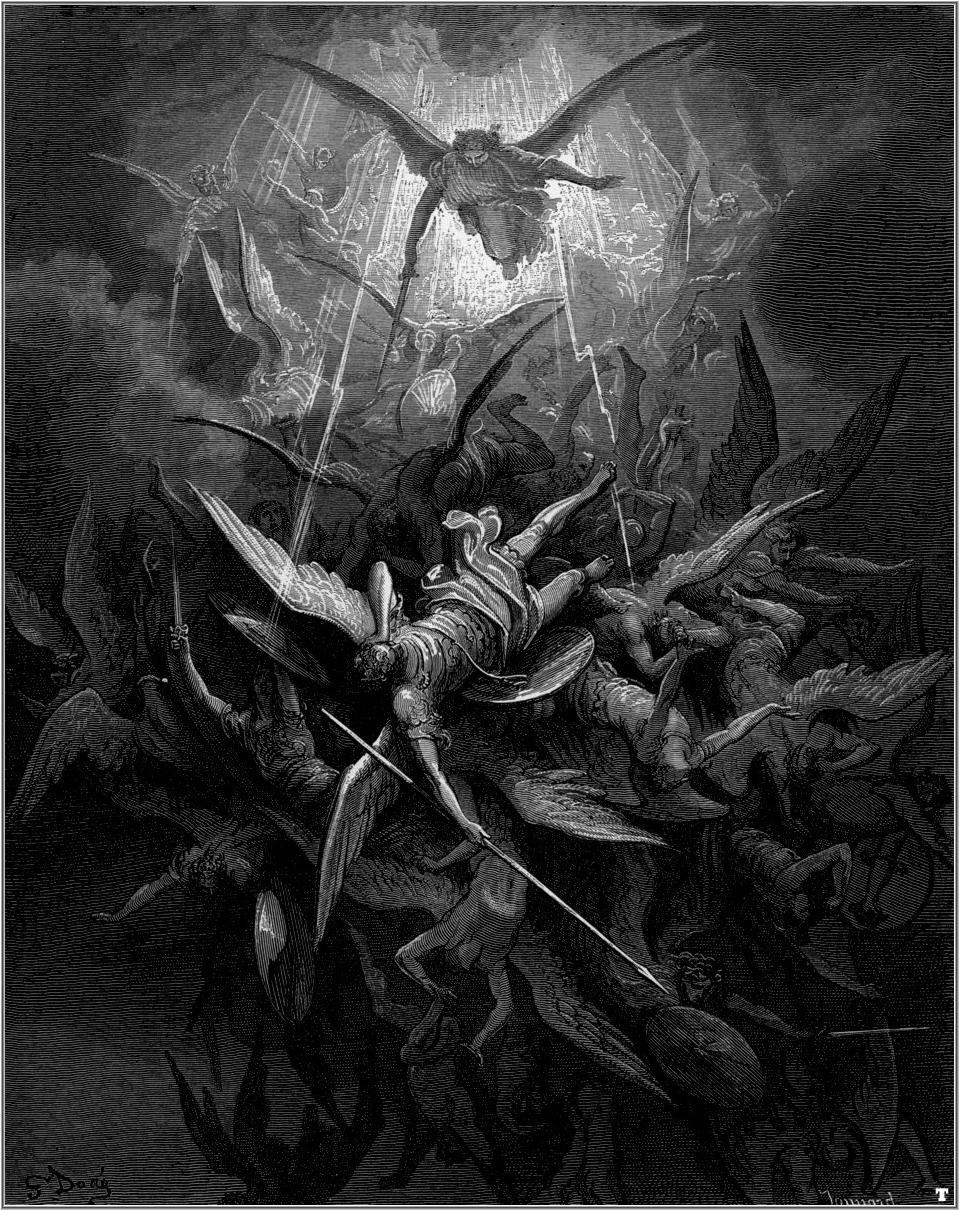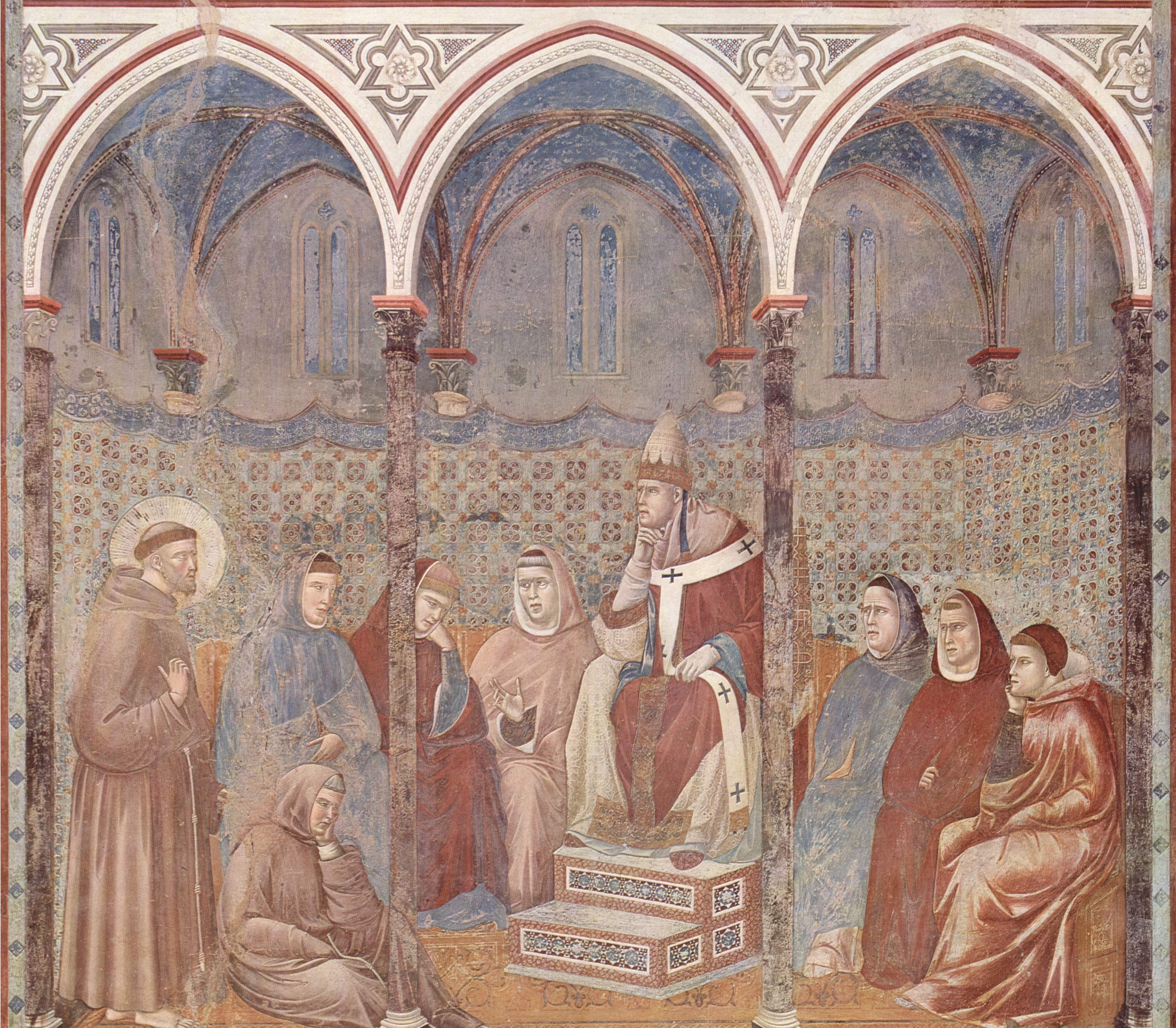|
Conrad Of Urach
__NOTOC__ Conrad of Urach (also named Conrad von Urach, , also known as Konrad or Kuno von Zähringen) (born in the 1170s; died 29 September 1227, probably in Bari) was a Cistercian monk and abbot, and Cardinal Bishop of Porto and Santa Rufina; he declined the papacy.Michael Ott (1908). " Conrad of Urach". In ''Catholic Encyclopedia''. 4. New York: Robert Appleton Company. Infancy Conrad was the second son of Count Egino IV of Urach and his wife Agnes, sister of Berthold V of Zähringen, in the early generations of the line of Dukes of Württemberg. His early education was entrusted to his great-uncle Rudolf of Zähringen, Bishop of Liège. At an early age he became a canon of St. Lambert's Cathedral in Liège. His parents married in 1181, and so it is thought his birthdate was around 1185. This makes his ecclesiastical career, starting as an oblate, coherent with the normal career of a secular child, who would have entered into a squireship at around the same age he seems to ha ... [...More Info...] [...Related Items...] OR: [Wikipedia] [Google] [Baidu] |
Bari
Bari ( ; ; ; ) is the capital city of the Metropolitan City of Bari and of the Apulia Regions of Italy, region, on the Adriatic Sea in southern Italy. It is the first most important economic centre of mainland Southern Italy. It is a port and university city as well as the city of Saint Nicholas. The city itself has a population of 315,473 inhabitants, and an area of over , while the urban area has 750,000 inhabitants. Its Metropolitan City of Bari, metropolitan province has 1.2 million inhabitants. Bari is made up of four different urban sections. To the north is the closely built old town on the peninsula between two modern harbours, with the Basilica di San Nicola, Basilica of Saint Nicholas, the Cathedral of San Sabino (1035–1171) and the Castello Normanno-Svevo (Bari), Norman-Swabian Castle, which is now also a major nightlife district. To the south is the Murat quarter (erected by Joachim Murat), the modern heart of the city, which is laid out on a rectangular grid-plan ... [...More Info...] [...Related Items...] OR: [Wikipedia] [Google] [Baidu] |
Cîteaux Abbey
Cîteaux Abbey ( ) is a Catholic abbey located in Saint-Nicolas-lès-Cîteaux, south of Dijon, France. It is notable for being the original house of the Order of Cistercians. Today, it belongs to the Trappists (also called the Cistercians of the Strict Observance). The abbey has about 35 monks. The community produces a cheese branded under the abbey's name, as well as caramels and honey-based candies. History Cîteaux Abbey was founded on Saint Benedict's Day, 21 March 1098, by a group of monks from Molesme Abbey seeking to follow more closely the Rule of St. Benedict. The Abbey was supported by Renaud, Vicomte de Beaune, and Odo I, Duke of Burgundy. They were led by Saint Robert of Molesme, who became the first abbot. The site was wooded and swampy, in a sparsely populated area. The toponym predates the abbey, but its origin is uncertain. Theories include a derivation from ''cis tertium'' [''lapidem miliarium''], "this side of the third (milliarium, milestone)" of the Roman ... [...More Info...] [...Related Items...] OR: [Wikipedia] [Google] [Baidu] |
Engelbert II Of Berg
Count Engelbert II of Berg, also known as Saint Engelbert, Engelbert of Cologne, Engelbert I, Archbishop of Cologne or Engelbert I of Berg, Archbishop of Cologne (1185 or 1186, Schloss Burg – 7 November 1225, Gevelsberg) was archbishop of Cologne and a saint; he was notoriously murdered by a member of his own family. Early life Engelbert was born in 1185 or 1186 in Schloss Burg (present ), the younger son of Count Engelbert I of Berg and his wife Margarete of Guelders. He was educated at the cathedral school in Cologne. From 1198 (at the age of twelve or thirteen) he held the office of provost of St. George in Cologne, and from 1199 to 1216 he also held the office of cathedral provost at Cologne Cathedral. He further acquired at various times a number of other provostships: in Cologne, Aachen, Deventer and Zutphen. He was elected Bishop of Münster in 1203, but he declined because of his age. [...More Info...] [...Related Items...] OR: [Wikipedia] [Google] [Baidu] |
University Of Montpellier
The University of Montpellier () is a public university, public research university located in Montpellier, in south-east of France. Established in 1220, the University of Montpellier is one of the List of oldest universities in continuous operation, oldest universities in the world. The university was split into three universities (the University of Montpellier 1, the Montpellier 2 University, University of Montpellier 2 and the Paul Valéry University, Montpellier III, Paul Valéry University Montpellier 3) for 45 years from 1970 until 2015 when it was subsequently reunified by the merger of the two former, with the latter, now named Paul Valéry University, Montpellier III, remaining a separate entity. History The university is associated with a papal bull issued by Pope Nicholas IV in 1289, combining various centuries-old schools into a university. The university is considerably older than its formal founding date, with the first statutes given by Conrad of Urach in 1220. ... [...More Info...] [...Related Items...] OR: [Wikipedia] [Google] [Baidu] |
Dominican Order
The Order of Preachers (, abbreviated OP), commonly known as the Dominican Order, is a Catholic Church, Catholic mendicant order of pontifical right that was founded in France by a Castilians, Castilian priest named Saint Dominic, Dominic de Guzmán. It was approved by Pope Honorius III via the papal bull on 22 December 1216. Members of the order, who are referred to as Dominicans, generally display the letters ''OP'' after their names, standing for , meaning 'of the Order of Preachers'. Membership in the order includes friars, nuns, Religious sister (Catholic), active sisters, and Laity, lay or secular Dominicans (formerly known as Third Order of Saint Dominic, tertiaries). More recently, there have been a growing number of associates of the religious sisters who are unrelated to the tertiaries. Founded to preach the The gospel, gospel and to oppose heresy, the teaching activity of the order and its scholastic organisation placed it at the forefront of the intellectual life of ... [...More Info...] [...Related Items...] OR: [Wikipedia] [Google] [Baidu] |
Sixth Crusade
The Sixth Crusade (1228–1229), also known as the Crusade of Frederick II, was a military expedition to recapture Jerusalem and the rest of the Holy Land. It began seven years after the failure of the Fifth Crusade and involved very little actual fighting. The diplomatic maneuvering of the Holy Roman Emperor and King of Sicily, Frederick II, Holy Roman Emperor, Frederick II, resulted in the Kingdom of Jerusalem regaining some control over Jerusalem for much of the ensuing fifteen years as well as over other areas of the Holy Land. Western Europe after the Fifth Crusade The Fifth Crusade ended in 1221, having failed to gain any more influence in the Near East. Frederick II, Holy Roman Emperor, Frederick II, Holy Roman Emperor, never joined the campaign, despite his vow to do so. The forces he sent to Egypt arrived too late to make a difference in the debacle, partially due to the lack of effective leadership. They would have to wait for many more years for Frederick's actions. W ... [...More Info...] [...Related Items...] OR: [Wikipedia] [Google] [Baidu] |
Frederick II, Holy Roman Emperor
Frederick II (, , , ; 26 December 1194 – 13 December 1250) was King of Sicily from 1198, King of Germany from 1212, King of Italy and Holy Roman Emperor from 1220 and King of Jerusalem from 1225. He was the son of Emperor Henry VI, Holy Roman Emperor, Henry VI of the Hohenstaufen dynasty (the second son of Emperor Frederick Barbarossa) and Queen Constance I of Sicily of the Hauteville dynasty. Frederick was one of the most powerful figures of the Middle Ages and ruled a vast area, beginning with Sicily and stretching through Italy all the way north to Germany. Viewing himself as a direct successor to the Roman emperors of antiquity, he was Holy Roman Emperor, Emperor of the Romans from his papal coronation in 1220 until his death; he was also a claimant to the title of King of the Romans from 1212 and unopposed holder of that monarchy from 1215. As such, he was King of Germany, King of Italy, of Italy, and King of Burgundy, of Burgundy. At the age of three, he was crowned King ... [...More Info...] [...Related Items...] OR: [Wikipedia] [Google] [Baidu] |
Albigenses
Catharism ( ; from the , "the pure ones") was a Christian quasi-dualist and pseudo-Gnostic movement which thrived in Southern Europe, particularly in northern Italy and southern France, between the 12th and 14th centuries. Denounced as a heretical sect by the Catholic Church, its followers were attacked first by the Albigensian Crusade and later by the Medieval Inquisition, which eradicated the sect by 1350. Around 1 million were slaughtered, hanged, or burnt at the stake. Followers were known as Cathars or Albigensians, after the French city Albi where the movement first took hold, but referred to themselves as Good Christians. They famously believed that there were not one, but two Godsthe good God of Heaven and the evil god of this age (). According to tradition, Cathars believed that the good God was the God of the New Testament faith and creator of the spiritual realm. Many Cathars identified the evil god as Satan, the master of the physical world. The Cathars believed ... [...More Info...] [...Related Items...] OR: [Wikipedia] [Google] [Baidu] |
Mission (Christian)
A Christian mission is an organized effort to carry on evangelism, in the name of the Christian faith. Missions involve sending individuals and groups across boundaries, most commonly geographical boundaries. Sometimes individuals are sent and are called missionaries, and historically may have been based in mission stations. When groups are sent, they are often called mission teams and they undertake mission trips. There are a few different kinds of mission trips: short-term, long-term, relational and those that simply help people in need. Some people choose to dedicate their whole lives to mission. Missionaries preach the Christian faith and sometimes administer the sacraments, and provide humanitarian aid or services. Christian doctrines (such as the "Doctrine of Love" professed by many missions) permit the provision of aid without requiring religious conversion. Nonetheless, the provision of help has always been closely tied to evangelization efforts. History of Christian ... [...More Info...] [...Related Items...] OR: [Wikipedia] [Google] [Baidu] |
Papal Legate
300px, A woodcut showing Henry II of England greeting the Pope's legate. A papal legate or apostolic legate (from the ancient Roman title '' legatus'') is a personal representative of the Pope to foreign nations, to some other part of the Catholic Church, or to representatives of a state or monarchy. A legate is empowered in matters of Catholic faith and for the settlement of ecclesiastical matters. The legate is appointed directly by the Pope—the Bishop of Rome and head of the Catholic Church. Hence a legate is usually sent to a government, to a sovereign, to a large body of believers (such as a national church), or to take charge of a major religious effort, such as an ecumenical council, a crusade to the Holy Land, or even against a heresy such as the Cathars. The term ''legation'' is applied both to a legate's mandate and to the territory concerned (such as a state, or an ecclesiastical province). The relevant adjective is ''legatine''. History 200px, Cardinal Th ... [...More Info...] [...Related Items...] OR: [Wikipedia] [Google] [Baidu] |
Pope Honorius III
Pope Honorius III (c. 1150 – 18 March 1227), born Cencio Savelli, was head of the Catholic Church and ruler of the Papal States from 18 July 1216 to his death. A canon at the Basilica di Santa Maria Maggiore, he came to hold a number of important administrative positions, including that of Camerlengo. In 1197, he became tutor to the young Frederick II. As pope, he worked to promote the Fifth Crusade, which had been planned under his predecessor, Innocent III. Honorius repeatedly exhorted King Andrew II of Hungary and Emperor Frederick II to fulfill their vows to participate. He also gave approval to the recently formed Dominican and Franciscan religious orders. Early work He was born in Rome as a son of Aimerico, a member of the Roman Savelli family. For a time canon at the church of Santa Maria Maggiore, he later became Camerlengo of the Holy Roman Church on December 5, 1189 and Cardinal Deacon of Santa Lucia in Silice on 20 February 1193. Under Pope Clement III and P ... [...More Info...] [...Related Items...] OR: [Wikipedia] [Google] [Baidu] |
Rome
Rome (Italian language, Italian and , ) is the capital city and most populated (municipality) of Italy. It is also the administrative centre of the Lazio Regions of Italy, region and of the Metropolitan City of Rome. A special named with 2,746,984 residents in , Rome is the list of cities in the European Union by population within city limits, third most populous city in the European Union by population within city limits. The Metropolitan City of Rome Capital, with a population of 4,223,885 residents, is the most populous metropolitan cities of Italy, metropolitan city in Italy. Rome metropolitan area, Its metropolitan area is the third-most populous within Italy. Rome is located in the central-western portion of the Italian Peninsula, within Lazio (Latium), along the shores of the Tiber Valley. Vatican City (the smallest country in the world and headquarters of the worldwide Catholic Church under the governance of the Holy See) is an independent country inside the city boun ... [...More Info...] [...Related Items...] OR: [Wikipedia] [Google] [Baidu] |








